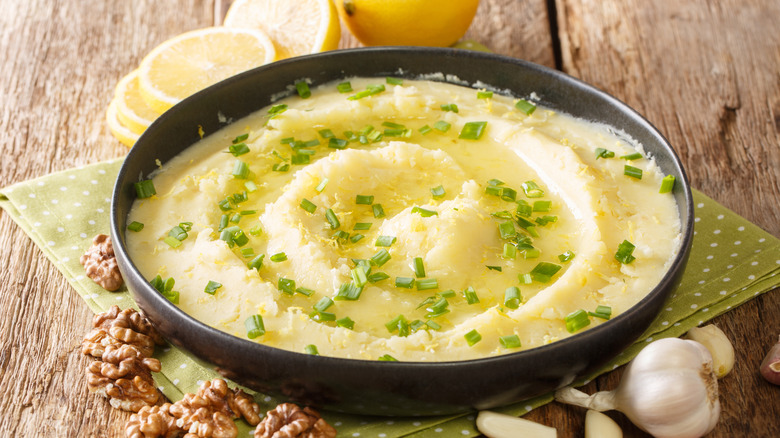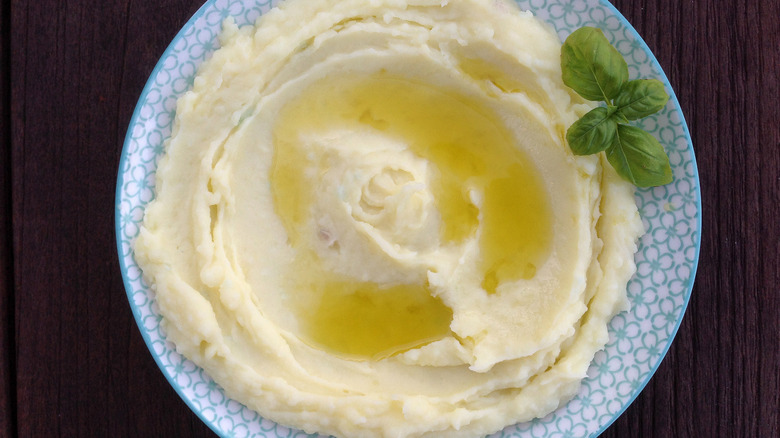Skordalia: Greece's Garlic Potato Dip That's As Creamy As Hummus
The Mediterranean region is known for creamy dips, including the adorably named baba ganoush, silky, milky labneh that dates back centuries, tzatziki from either the Ottoman Empire or Greece, friggione from Italy, and of course hummus, in all of its regional variations. But while those examples are all well-known to many people around the world, they aren't the only creamy condiments from the region, and tzatziki isn't the only one that hails from Greece. If you haven't yet tried skordalia, you're missing out on a garlicky delight.
Traditional skordalia differs from the aforementioned Mediterranean dips in one key way: what's in it. The base of baba ghanoush is made from eggplant; labneh, from strained yogurt; tzatziki, from cucumbers and yogurt; friggione, from tomatoes and onions; and hummus, from chickpeas. Skordalia, however, eschews all of these ingredients in favor of an unexpected one: mashed potatoes. The result is a dish not dissimilar to hummus in texture but with a flavor all of its own.
Potatoes, olive oil, and garlic are key to creamy skordalia
A creamy, potato-based dip makes a lot of sense if you think about it. If you take mashed potatoes and add more and more cream, eventually you'd get to something similar to skordalia in texture and appearance. Mashed potatoes form the base for traditional Greek skordalia, which contains several other ingredients, but no cream. To make skordalia, add raw garlic paste, olive oil, and either lemon juice or vinegar cooked and mashed potatoes — a simple, delicious dip you can make easily at home.
But while most Mediterranean and Middle Eastern dips have long histories (hummus and baba ghanoush both date back to at least the 13th century), skordalia is a relatively more recent creation. The reason why is somewhat obvious: because potatoes come from the Americas. For all of the potato's presence in European cuisines, the humble spud originally came from the Andes in South America, meaning it wouldn't have appeared anywhere in Europe until after the first contact between Europeans and indigenous people in the 1500s.
Skordalia's origins and long history
Although the dish now known as modern skordalia couldn't have existed until at least the 16th century, the origins of the dish are much older than that. Ancient Greeks ate a dish called "skorothalmi", which is described as a bread and garlic sauce served with fish and vegetables, that was made with pureed almonds or walnuts and bread, instead of potatoes. The modern version, though, is now much more popular. The name itself seems to be a combination of the Greek word for garlic ("skordo") and the Italian word for "garlicky" (agliata), meaning the term itself is pretty accurate whether you're talking about the ancient or the modern version.
Today, skordalia serves as a dip in its own right, and also an accompaniment to proteins. Though this can be meats like goat, rabbit, or pork, the most common association is with fish, particularly salted cod. It's now so closely associated with Greek culture that it's one of the traditional foods eaten on Greek Independence Day on March 25.
Although you likely have had and now love the better-known Mediterranean dips, you should give skordalia a try. After all, if it's the national sauce of Greece, you don't want to miss out.


